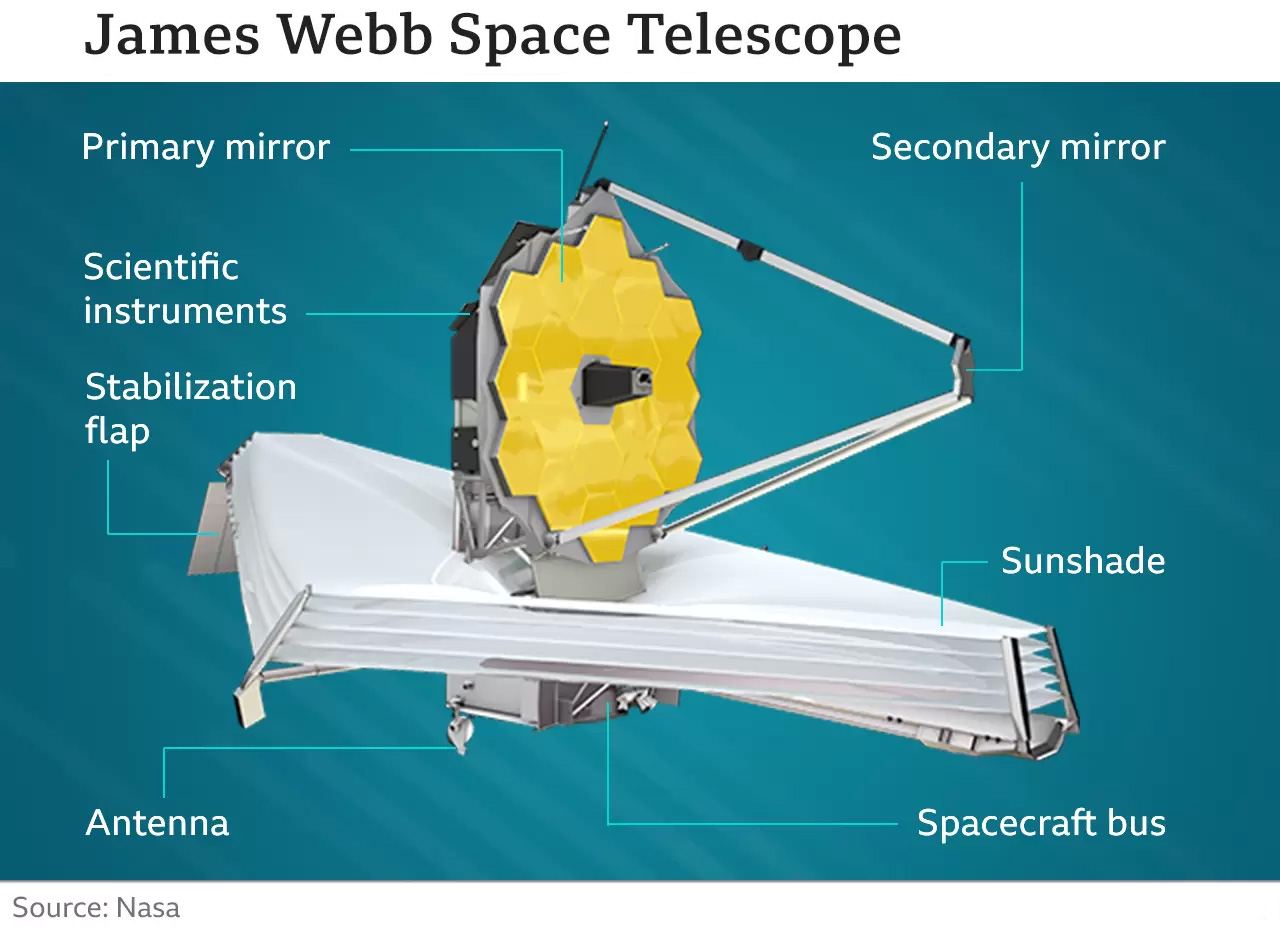On its first science birthday, the James Webb Space Telescope commemorates a year since astronomers received control of this exceptional observatory. To celebrate this milestone, NASA, the US space agency, has unveiled a breathtaking image of the Rho Ophiuchi cloud complex, one of the most frequently photographed sections of the sky. Situated merely 400 light-years away, this cloud complex holds significance as the nearest star-forming region to Earth in outer space.
Situated slightly off the plane of the Milky Way, the Rho Ophiuchi region captivates the attention of both professional and amateur astronomers.
 Thanks to the remarkable resolution of the Webb telescope, we are granted a glimpse into a fraction of this densely packed area filled with gas and dust.
Thanks to the remarkable resolution of the Webb telescope, we are granted a glimpse into a fraction of this densely packed area filled with gas and dust.
Spanning a distance of approximately half a light-year or 4.7 trillion kilometers, the image showcases a prominent white nebula at the center-left. Illuminated by the youthful star S1, which is a few million years old, this stellar entity breathes life into its surroundings.
Directing our gaze below, we encounter a striking red, bar-shaped structure spanning the entire image. This feature represents the outflow of material emanating from a protostar named VLA1623.
In the early stages of their existence, these very young stars, measured in mere thousands of years, gravitationally attract hydrogen gas and dust as they grow. However, the complex dynamics involved in this process result in the ejection of some materials outward. Subsequently, these ejected materials collide with the surrounding environment, igniting and illuminating it.
VLA1623: A Hidden Star Revealed by Webb's Observations
Deep within the outflow, the nascent star known as VLA1623 remains hidden from Webb's infrared eyes. Nonetheless, its presence has been confirmed through observations made by radio-sensitive telescopes.
Additional similar protostars located in the immediate vicinity have also been detected, likely contributing to the intricate contortions of the outflow.
Once the intricate dynamics surrounding VLA1623 in the image are understood, similar flows can be identified elsewhere within Webb's expansive view. This serves as a testament to the productivity of this region in space.
The James Webb Space Telescope (JWST) is a collaborative effort between NASA, the European Space Agency (ESA), and the Canadian Space Agency (CSA).
Launched on December 25, 2021, it took engineers six months to set up and thoroughly test all systems of the observatory.
On July 12, 2022, the first color images were unveiled, marking a significant milestone.
JWST's primary objective is to trace the origins of the very first stars that illuminated the Universe over 13.5 billion years ago. Additionally, it has already revealed that galaxies formed much earlier and evolved at a faster rate than previously believed.
The telescope also aims to provide detailed insights into the processes of star formation and planet birth. This is why Rho Ophiuchi, with its intriguing characteristics, becomes an enthralling target for the most advanced space observatory.
Prof. Mark McCaughrean, Esa's senior advisor for science & exploration, expressed his fascination with the captivating image, stating, "There's so much going on in this spectacular picture, as young stars splash vibrant colors across the clouds of gas and dust from which they're being born."
McCaughrean further emphasized the transformative impact of JWST, not only in revolutionizing our understanding of galaxy formation in the early universe but also in unraveling the mysteries of star and planet formation within our own Milky Way.
To highlight the incredible capabilities of Webb, the image below showcases the Rho Ophiuchi complex captured by NASA's now-retired Spitzer Space Telescope, which, like Webb, operated in the infrared spectrum. While Spitzer was highly capable, its primary mirror with a diameter of only 85cm limited the level of detail that could be achieved compared to Webb's remarkable 6.5m primary mirror.